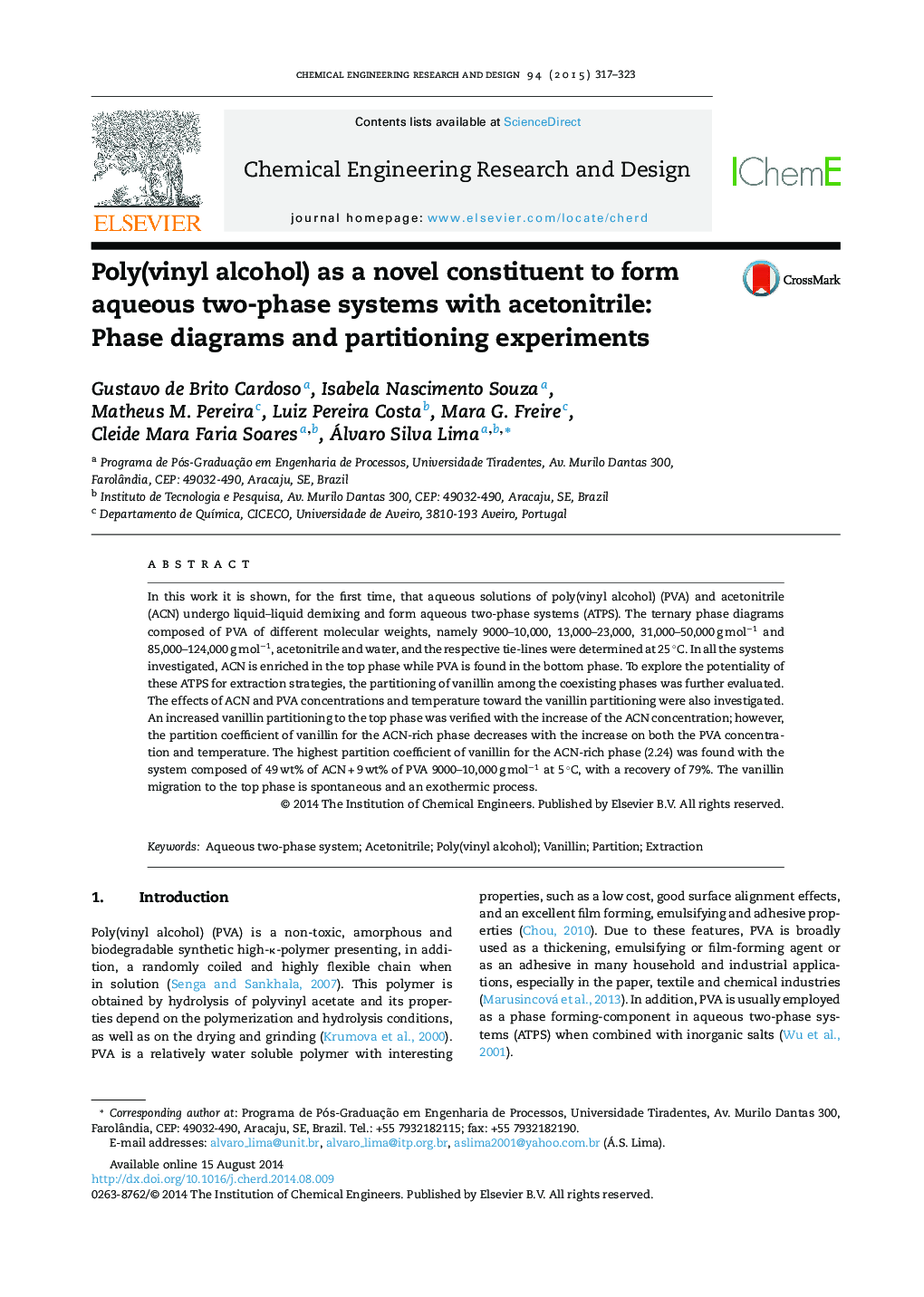| کد مقاله | کد نشریه | سال انتشار | مقاله انگلیسی | نسخه تمام متن |
|---|---|---|---|---|
| 620479 | 1455174 | 2015 | 7 صفحه PDF | دانلود رایگان |
• Novel ATPS can be formed by acetonitrile (ACN) and poly(vinyl alcohol) (PVA).
• ACN is enriched in the top phase while PVA is found in the bottom phase.
• Vanillin preferentially partitions for the acetonitrile-rich phase (top phase).
• The vanillin migration to the acetonitrile-rich phase is an exothermic and spontaneous process.
In this work it is shown, for the first time, that aqueous solutions of poly(vinyl alcohol) (PVA) and acetonitrile (ACN) undergo liquid–liquid demixing and form aqueous two-phase systems (ATPS). The ternary phase diagrams composed of PVA of different molecular weights, namely 9000–10,000, 13,000–23,000, 31,000–50,000 g mol−1 and 85,000–124,000 g mol−1, acetonitrile and water, and the respective tie-lines were determined at 25 °C. In all the systems investigated, ACN is enriched in the top phase while PVA is found in the bottom phase. To explore the potentiality of these ATPS for extraction strategies, the partitioning of vanillin among the coexisting phases was further evaluated. The effects of ACN and PVA concentrations and temperature toward the vanillin partitioning were also investigated. An increased vanillin partitioning to the top phase was verified with the increase of the ACN concentration; however, the partition coefficient of vanillin for the ACN-rich phase decreases with the increase on both the PVA concentration and temperature. The highest partition coefficient of vanillin for the ACN-rich phase (2.24) was found with the system composed of 49 wt% of ACN + 9 wt% of PVA 9000–10,000 g mol−1 at 5 °C, with a recovery of 79%. The vanillin migration to the top phase is spontaneous and an exothermic process.
Figure optionsDownload high-quality image (90 K)Download as PowerPoint slide
Journal: Chemical Engineering Research and Design - Volume 94, February 2015, Pages 317–323
